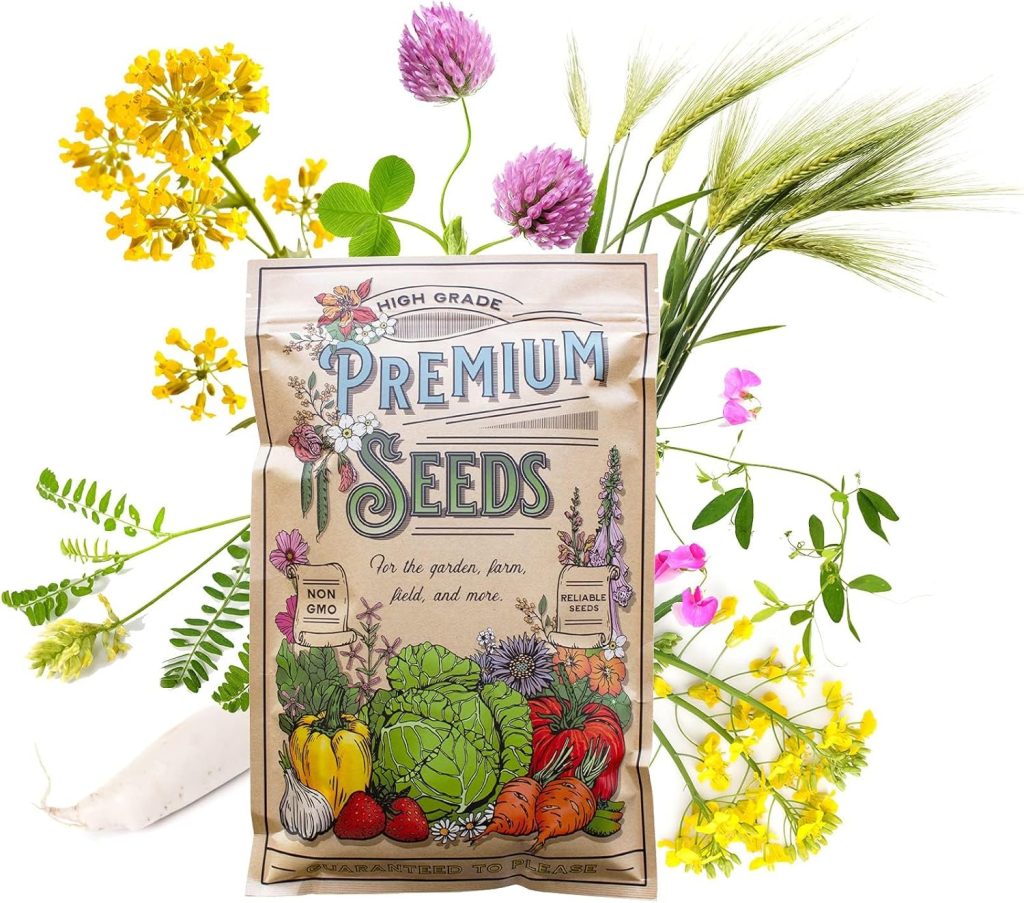As a home gardener, you may not have thought much about cover crops—or maybe you’ve assumed they’re only for farmers with big fields of corn or wheat. The truth is that cover crops can be just as useful in a small backyard garden and raised beds as they are on a farm. Whether you grow in raised beds or have a little in-ground space, cover crops are a simple way to build healthier soil, cut down on weeds, and set yourself up for an even better harvest next season. They are a great way to “put your garden to bed for the winter” and have an improved soil for your spring garden. This will be my 3rd season using cover crops in the beds I won’t be planting a fall garden in.
Cover crops act like a protective blanket for your soil during the off-season. They prevent erosion, shade out weeds, and feed the soil as they grow. When you cut them back and leave the roots in place, they continue enriching the soil with organic matter and nutrients. Over time, this builds stronger, more productive garden beds without relying on synthetic fertilizers.
Large farms do extensive testing on their fields to determine which cover crop they will use that year. Not every cover crop does the same job, which is why it helps to know the basics:
-
Cereals (like rye or oats): Add organic matter and protect soil from erosion.
-
Legumes (like clover or peas): Pull nitrogen from the air and add it back into the soil for your next crops. Beneficial after heavy feeders like summer vegetables.
-
Brassicas (like mustard): Help break up compacted soil and can even suppress certain soil-borne pests. They act as a natural pest control.
But for the home gardener, there is no need to worry which one you should use. A mix of these types often works best, especially in raised beds, because you get a little bit of everything—fertility, soil structure, and natural pest control.
This is the cover crop I bought this year for the beds I won’t be planting a fall garden in.

This blend contains Austrian Field Pea, Wheat, Triticale, Collards Forage, Hairy Vetch, Driller Diakon Radish, Crimson Clover, Berseem Clover, and Yellow Mustard. It will cover 600 square feet, and since I will only be needing enough for 100 square feet (4 of my beds), I will have plenty for my other beds next fall. I ordered these from Amazon but you can check with your local garden center to see if they have a mix.
When and How to Plant
You can plant cover crops in the fall after clearing out your summer vegetables, or in early spring before your warm-season crops go in. In raised beds, just scatter the seed over the surface and lightly rake it in. Keep it watered until it’s established, then let it do the work for you.
When to Cut Back Your Cover Crop
One of the biggest questions gardeners have is: what do I do when it’s time to plant my vegetables? Here’s the simple answer:
-
Cut it down with hand pruners or shears once it starts to flower. You can also use a weedeater.
-
Leave the roots in place—they’ll break down and feed the soil.
-
Chop and drop the tops right on the bed as mulch or toss them into your compost pile. I allow mine to lay on top of the soil and plant through it.
- Important: Cut it down once it starts to flower or it will produce seeds and continue to come back up.
Cover crops aren’t complicated, and they don’t require extra space or special tools. Even in a small, raised bed, they can make a big difference in soil health and next season’s harvest. If you’ve been curious about trying them, this fall or spring is the perfect time to experiment—you may be surprised by the difference in your garden’s health.
Happy Gardening
Karen
- This post contains an affiliate link from Amazon. If you purchase anything while on this link, I may receive a small compensation at no extra cost to you.


Leave a Reply